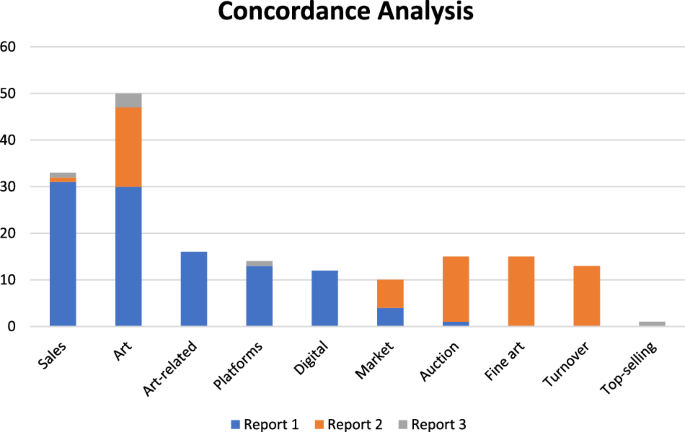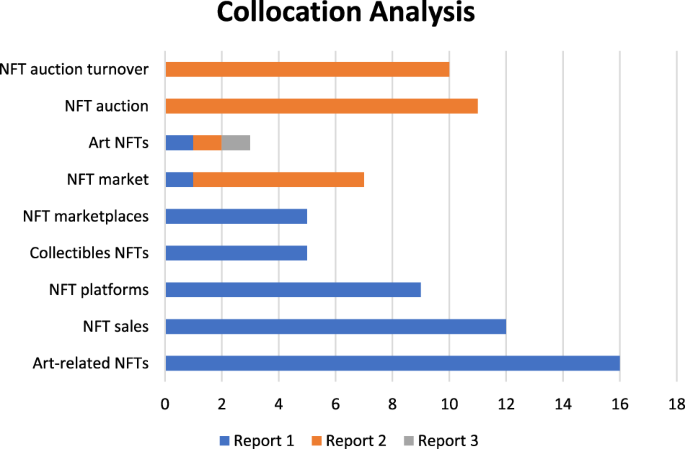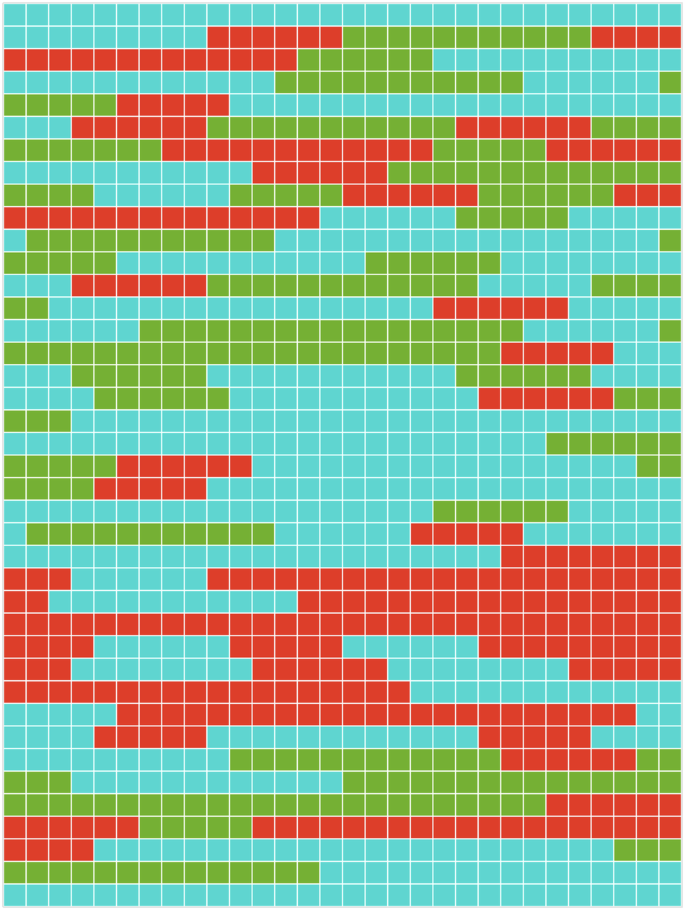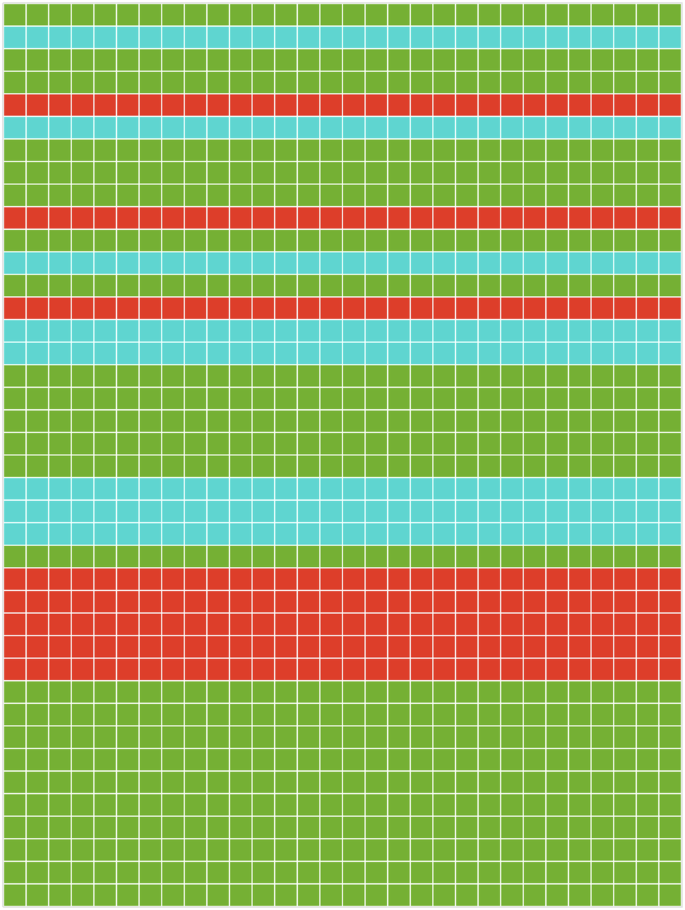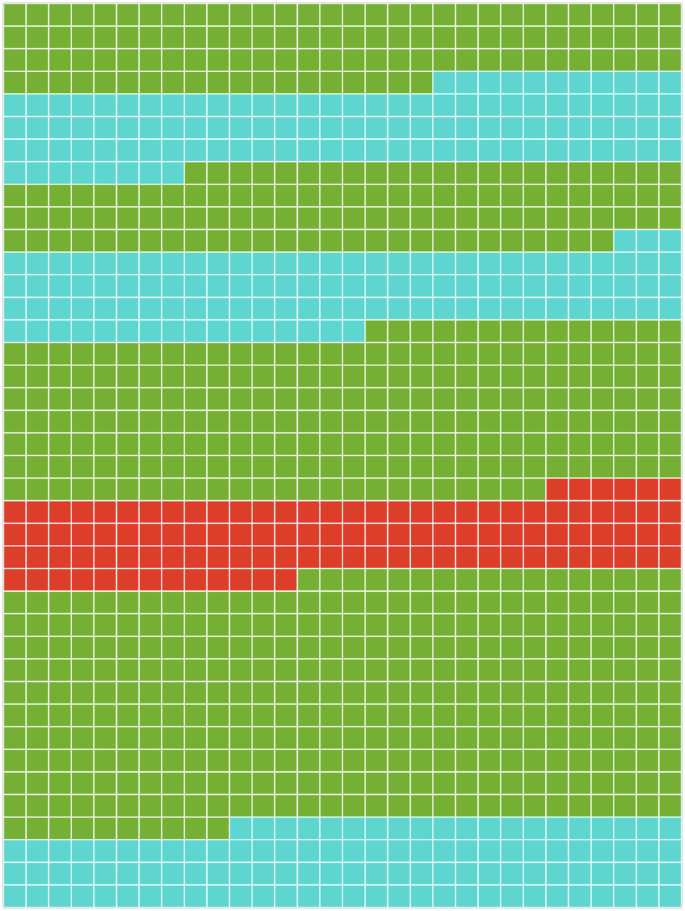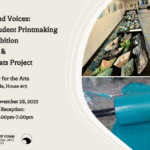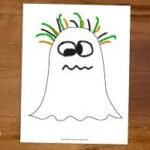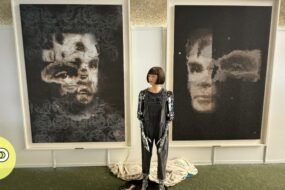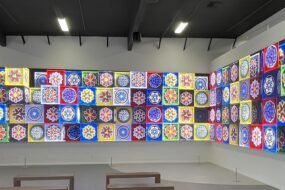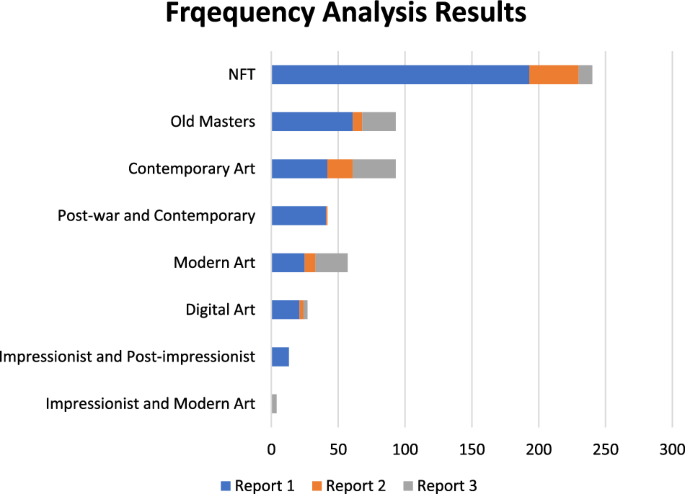
In this study, we employ critical discourse analysis supplemented with corpus linguistics tools to examine the language and narratives surrounding NFTs in the art market on a corpus of key textual references. To this end, we focus our analysis on the framing and discursive representation of NFTs across three key economic reports related to the art market in 2023. Furthermore, we draw upon the political economy of art to explore the relationships between NFTs, the art market and its institutions, and the broader economic systems.
Applying Critical Discourse Analysis (CDA) in combination with corpus linguistics tools to the three art market reports would involve a close examination of the language, tone, and framing used in the report. The goal would be to uncover underlying assumptions, ideologies, and power dynamics related to the contemporary art market, primarily in terms of analysing the discourse around NFTs and digital art in general, in particular in the context of the language of market valuation and economic impact, as well as the language of art market forecasting and trends.
CDA and corpus linguistics will be employed to investigate how the reports frame NFTs and the NFT art market in terms of economic value and impact. For example, the choice of words, statistics, and metrics used to describe the market’s size, growth, and performance can reveal underlying assumptions about what is considered valuable or important in the art world. This analysis will also shed light on the ways in which the reports reinforce or challenge dominant narratives about the market’s relationship to broader economic trends and global financial systems.
As the reports cover recent developments in the art market, they are highly likely to touch on topics such as digital art and non-fungible tokens (NFTs). CDA will be applied to investigate how these emerging forms of art are framed in the report, including the assumptions made about their value, significance, and potential impact on the market. This analysis will also explore the ways in which the reports position digital art and NFTs in relation to traditional art forms and the broader art market landscape.
These art market reports often include forecasts and predictions about future trends in the art market. CDA will be employed to analyse the language and framing used in these sections, including the assumptions made about the factors that drive market change, the role of different stakeholders in shaping these trends, and the ways in which the reports reinforce or challenge conventional wisdom about the art market’s trajectory.
Corpus
For the purpose of this study, we will analyse three key economic reports on the art market, all published in 2023, with a combined total of 385 pages. While limited in number, the total word count across the three reports forms a substantial corpus of over 100,000 words. This provides a robust dataset for textual analysis. Likewise, these three texts combined provide a highly representative corpus, as they include some of the most important textual sources of quantitative and qualitative data related to this topic in a field marked by a highly limited number of publications of such rigour and scope, namely: a) The Art Market 2023 report by Art Basel and UBS (Art Basel & UBS 2023); b) The 2022 Global Art Market by Artprice and Artron Research Academy of Arts (ARAA) (ARAA and Artprice.com 2023); and c) Sotheby’s Insight Report – Peak Performance: The Art Market Beyond $1 Million, 2018–2022 (Sotheby’s and ArtTactic 2023).
Arguably the most influential annual report on the global art market, The Art Market Report by Art Basel and UBS (hereinafter referred to as Report 1), reviews the international art market, covering key trends and developments each year. Written by Dr Clare McAndrew, founder of Arts Economics, it is based on sales data combined with insight from a global survey of high-net-worth collectors, assessing sales and other operations of galleries, auction houses, art fairs, and collectors. In its 25th edition, Artprice and its Chinese partner ARAA analyse the global art auction business in the Global Art Market Report (hereinafter referred to as Report 2), focusing entirely on auctions. The report compares countries and auction houses and tracks the prices of artworks by art history’s most important figures and rising stars. Sotheby’s Insight Report’s first edition (hereinafter referred to as Report 3) analyses the art market above $1 million, utilising data and expert opinion. It uses Sotheby’s, Christie’s, and Phillips auction data, to examine ArtTactic auction data for Contemporary, Impressionist & Modern, Old Masters, and Chinese traditional paintings and artworks. A summary of the information about the corpus is presented in Table 1.
These art market reports are multimodal texts in that they contain text including statistics combined with data visualisation presented in charts, graphs, pies, etc. The three reports will be examined in terms of their discursive strategies employed in the framing of NFTs by utilising various methods from CDA in combination with corpus linguistics, including concordance, frequency, collocation analysis, and sentiment analysis. In this analysis, we were assisted with specialised computer software for processing large amounts of textual data using qualitative and quantitative methods, such as MAXQDA.
As all three of the texts in our corpus are economic reports, it would be useful to mention some specifics of the discourse deployed in economic reports. Economic reports often employ specific discursive strategies to convey information, shape the reader’s understanding, and sometimes persuade the audience to accept certain viewpoints or policy recommendations. Some common discursive strategies used in economic reports include: the use of highly technical language or specialist jargon, the use of figures of speech such as metaphors and analogies, reliance on quantitative data and statistical analysis, use of passive voice, nominalisation, euphemisms and hedging, causality, persuasive tone, and logical organisation and structure. A combination of these discursive strategies will be examined in our analysis of the three art market reports in this study.
Economic reports frequently use technical terms and jargon to convey precise and specialised information. This can establish the author’s credibility as an expert and create a sense of authority. Also, rhetorical devices such as analogies or metaphors can help simplify complex economic concepts and make them more accessible to a broader audience. They can also frame issues in specific ways, influencing the reader’s perception of the topic. Providing quantitative data and statistical analysis can lend credibility to arguments and reinforce specific points. Presenting data visually, such as in charts and graphs, can make complex information more digestible and persuasive. The use of passive voice can create a sense of objectivity and detachment, which may be desirable in an economic report to emphasise a neutral, facts-based analysis. Nominalisation is a strategy that involves turning verbs or adjectives into nouns, which can create a more abstract and formal tone. In economic reports, nominalisation can help emphasise the importance of certain concepts or ideas. Using euphemisms or hedging language can soften the impact of negative information or create a sense of uncertainty. For example, an economic report might use terms like “economic slowdown” instead of “recession” or “challenging conditions” instead of “crisis.” Establishing cause-and-effect relationships can help readers understand the consequences of specific economic phenomena or policy decisions, and it may also be used to persuade readers to support certain policy recommendations. Economic reports often follow a clear and logical structure, with an introduction, main body, and conclusion. This structure can make the report easier to follow and reinforce the author’s main arguments. While economic reports often strive for objectivity, they may still adopt a persuasive tone to argue for specific policy recommendations, interpretations, or actions. This can involve the use of rhetorical devices, strong language, or emotive appeals.
By recognising these discursive strategies in economic reports, we can better understand how the authors present information, shape the discourse, and influence the reader’s understanding of economic issues and policy decisions.
Analytical tools
In our analysis, we rely on extending critical discourse analysis with the application of a number of concepts and tools from corpus linguistics, which allow for the analysis and study of patterns of language within an extensive collection of texts, known as a corpus. One of the key tools employed in corpus linguistics is concordance analysis. A concordance is an alphabetical listing of words, phrases, or patterns in a text or a set of texts, along with their immediate context. The main goal of a concordance is to allow researchers to quickly and systematically examine how words or phrases are used within a given corpus. This can help to identify recurring patterns, variations in meaning, and linguistic structures.
While concordance analysis is a valuable tool in corpus linguistics, it is essential to recognise its limitations. Concordance lines usually provide a restricted context, typically a fixed number of words surrounding the keyword. This limited context may not always be sufficient to understand the whole meaning or usage of the keyword in question. Researchers may need to examine the broader context or consult the original text to gain a more comprehensive understanding. Furthemore, as concordance analysis primarily focuses on the surface forms of words or phrases, it may not account for variations in spelling, inflections, or synonyms that can convey similar meanings or functions. Also, concordance analysis only considers the textual data in a corpus, which means that non-textual information, such as images, audio, or video, is not taken into account. This can be limiting, especially when studying multimodal communication or understanding the role of non-textual elements in conveying meaning. Finally, concordance analysis may struggle to capture idiomatic expressions, as they often involve fixed word combinations that do not follow regular patterns. Researchers may need to use additional techniques or tools to identify and analyse idiomatic expressions effectively.
To overcome the limitations of concordance analysis and provide a more comprehensive understanding of language patterns and usage, several linguistic research methods can be used in conjunction with concordance analysis. In our study, we will rely on supplementing concordance analysis with frequency analysis, collocation analysis, and sentiment analysis.
Collocation analysis examines the co-occurrence patterns of words in a corpus, identifying which words frequently appear together. This can provide insights into the typical or preferred combinations of words and contribute to understanding the meaning and usage of specific terms. Frequency analysis involves counting the occurrences of words, phrases, or other linguistic features in a corpus. This can help identify common or rare elements in the language and contribute to understanding language patterns and trends. Sentiment analysis focuses on detecting subjective opinions and emotions expressed in the text. This approach can provide insights into the underlying themes, attitudes, and perspectives present in a corpus.
Analysis and findings
Utilising a CDA-informed corpus linguistics approach, this study undertook a comprehensive analysis of the three key reports related to the art market, comprised of an extensive 105,993-word corpus. The objective of this investigation was to examine the prominence and framing frequency of specific terms, particularly the term ‘NFT’, in relation to other noteworthy terms within the text. This was achieved by applying analysis of the term’s frequency, concordance, collocation, and sentiment, as well as looking at the overall report structure.
Frequency analysis
In terms of frequency, in Report 1, the term ‘NFT’ is mentioned 193 times throughout the report, yielding a frequency of 0.29%. This is in high contrast with its superordinate, ‘digital art’, which is only mentioned 21 times. Furthermore, when compared to other significant terms in the report, such as key sales categories, the term’s prominence becomes increasingly apparent. For instance, ‘contemporary art’, which represents the largest sales category in the global art market, appears merely 42 times, while ‘post-war and contemporary’ is mentioned 41 times. The term ‘Old Masters’ registers 61 occurrences, ‘Modern Art’ is cited 25 times, and ‘Impressionist and post-impressionist’ receives the least attention with only 13 mentions. Thus, frequency analysis alone of Report 1 indicates high prominence of the term ‘NFT’ and its associated concept. In Report 2, the frequency for the key term ‘NFT’ is lower than in Report 1, with 37 hits (0.17%). Still, just like in Report 1, the frequency of the key term in Report 2 is again significantly higher than other key sales categories, such as ‘Contemporary Art’ (19), and dramatically higher than its superordinate term, ‘Digital Art’ (3 hits). In Report 3, the frequency for ‘NFT’ is even lower, with only 10 hits (0.06%). Again, just like in Report 1 and Report 2, the key term’s frequency is much higher than its superordinate, ‘Digital Art’, with 3 hits. Most importantly, it is again higher than the dominant category for this market segment (above US$1 Million), which is ‘Impressionist and Modern Art’ (4 hits). Thus, the frequency analysis of the corpus indicates the high prominence of the term ‘NFT’ across all three art market reports in relation to other market categories (e.g. Contemporary Art, Old Masters, etc.), and in particular in comparison with ‘Digital Art’ of which NFT art is only a part. A summary of the the frequency data for the key terms across the three reports is presented in Fig. 1.
The high frequency of ‘NFT’ compared to ‘digital art’ suggests NFTs are gaining primacy as a form of digital art in art market discourse, as discussed by Fairclough regarding how frequency can indicate discursive prominence and ideological assumptions. The tiered frequency of ‘NFT’ across the reports mirrors the tiered market structure outlined in the political economy theory – its lower frequency in top-tier Report 3 reflects its still evolving status in high value segments. The prominence of ‘NFT’ reflects underlying assumptions privileging NFT art over broader digital art discourse. This quantitative prominence signals growing primacy and legitimacy conferred upon NFT art within mainstream art world ideology.
Concordance analysis
In terms of concordance, our analysis focused on the context in which the term ‘NFT’ was deployed by looking at a fixed number of words surrounding the keyword. For Report 1, the most frequent context words used for the term ‘NFT’ included: sales (31 hits), art (30) and art-related (16), platforms (13) and digital (12). In Report 2, the most frequently used context words for the term ‘NFT’ were the following: art (17), fine art (15), auction (14), turnover (13), and market (6). As for Report 3, the most frequent context words included art (3), sales (1), platforms (1) and top-selling (1). All of these contexts of the term ‘NFT’ in the three reports indicate the legitimisation and positioning of the concept of NFTs well within the established commercial discourse of the art market. A summary of the analysis of the most frequent context words for the term ‘NFT’ across the three reports is presented in Fig. 2.
These commercial context words align with the political economy view of art markets operating within capitalist systems. The legitimising effect noted by Fairclough is seen in ‘NFT’ concordances embedding it in commercial discourse. Situating NFT discourse within established art market terminology conveys institutional validation. However, the lack of new lexicons or categorisation schemes points to a consolidation rather than transformation of existing boundaries and hierarchies.
Collocation analysis
The collocation analysis of the three reports focused on identifying which words frequently appeared together with the term ‘NFT’, thus allowing us to gain insight into the associations and connotations that words acquire through their frequent co-occurrence with other words.
In Report 1, the most frequented word combinations were: art-related NFTs (16), NFT sales (12), NFT platforms (9), collectibles NFTs (5), and NFT marketplaces (4). In Report 2, the most frequent word combinations included: NFT auction (11), NFT auction turnover (10), and NFT market (6). In Report 3, the most frequent word combinations (albeit with a much lower frequency than in the other two reports) were: art NFTs (1), Everydays NFT (1), art NFTs grew (1), and top-selling NFT (1). A summary of the most frequent word combinations with ‘NFT’ across the three reports is presented in Fig. 3.
Similar to the results of the previous concordance analysis, the collocation analysis also yields the conclusion that the most common associations and connotations that the term ‘NFT’ acquires in the three art market reports are primarily related to the category of art and to the various elements of the art market, thus firmly establishing it both as an art medium as well as an art market commodity. Frequent collocations positioning NFTs as an art object and commodity reflect the political economy lens of art operating in commercial markets under capitalism, in line with criticism that NFT art exemplifies the reification of art and creativity (Poposki 2024b). Framing NFTs primarily through a commercial lens of sales, auctions and markets overlooks artistic and cultural dimensions. This risks narrowing the discourse to financialised interpretations of worth.
Here are some additional examples of collocates from the article that position NFTs as a commercial object within art market discourse: “NFT sales” emphasises monetary transactions and commercial value; “NFT platforms” situates NFTs within a marketplace infrastructure; “NFT marketplaces” associates NFTs with commercial exchange venues; “NFT auction” frames NFTs as objects for bidding and sale at auction; “NFT auction turnover” highlights the financial volume and circulation of NFTs at auction; “NFT market” directly labels NFTs as objects traded in a financial marketplace; “top-selling NFT” implies NFTs are commodities ranked by commercial performance.
These collocates repeatedly co-position the “NFT” concept with terminology related to commercial transactions, sales, markets, auctions, turnover, buying and selling. This reinforces an art market framing of NFTs primarily in terms of financial value, revenue streams, and commercial potential rather than artistic meaning.
Sentiment analysis
The sentiment analysis conducted on the three art market reports focused on detecting the emotional tone of the subjective opinions expressed in the text in connection to NFTs. In particular, all statements featuring the term ‘NFT’ were divided into three distinct categories in terms of their subjective sentiment expressed: positive, negative, and neutral.
Figure 4–6 provide a visual representation of the findings of the sentiment analysis of the corpus, produced using MAXQDA, in the form of document portraits of the three art market reports, encoded in three colours: green (positive sentiment), red (negative sentiment), and blue (neutral sentiment), where each square in the document portrait represents a coded sentiment occurrence in a sentence.
As evidenced from the data visualisation, the results of the sentiment analysis of the key term across the corpus indicate that the framing of the concept of NFTs was overwhelmingly positive in Report 2 and Report 3. Unlike the other two reports, Report 1 was largely neutral. Although the general sentiment in the main text of Report 1 was on the neutral-to-positive spectrum, one part of the report in particular, Exhibit 2, extensively discussed mostly negative aspects related to NFTs, such as copyright infringement, money laundering, insider trading, fraud issues, etc., resulting in an overall neutral sentiment.
Dedicated NFT sections in Reports 1 and 2 but not 3 emphasise NFT integration in mainstream but not high-end art discourse, evidencing the political economy hierarchy. The overall positive sentiment reveals an upbeat institutional attitude embracing the potential of NFT art, while tempered cautions point to ongoing tensions around instability and skepticism that persist.
Structure analysis
Finally, the structure analysis of the corpus focused on the organisation of the text related to NFTs, to identify the positioning and framing of the key term within the textual structure.
In terms of the report’s structure, a thorough examination of Report 1 revealed that the term ‘NFT’ was given considerable space and attention, receiving two dedicated subsections within The Global Art Market section (1.4 and 1.10). Furthermore, one also has to note the additional focus given to NFTs in two addendums to Part 1 of Report 1, namely Exhibit 1 (Embracing Technical Innovation in the Artworld, p. 41) and Exhibit 2 (NFTs In A (Legal) Nutshell, p. 46). Overall, an intensely high structural prominence of the term ‘NFT’ was identified in Report 1. Likewise, in Report 2, there was again high structural prominence for NFTs, as the key term was given its own sub-section under Part 3 (Artists and Works that marked the year), as one of the three listed Trends in Contemporary Art. On the contrary, Report 3 did not reserve a dedicated sub-section for the key term, indicating low structural prominence for NFTs, which translates into a still unestablished status of NFTs in the top end of the art market.
In conclusion, by conducting a rigorous corpus linguistics analysis and employing critical discourse analysis techniques, this study was able to identify a high prominence and framing of NFTs and their associated concept within the corpus, signifying a high level of acceptance and valorisation of NFTs among art collectors, auction houses, and the art market in general.
Moreover, although digital art has a much longer history than the recent emergence of NFTs, as well as a more established art historical status in terms of art criticism and museum collections, it is notable that the frequency of the hyponym (‘NFT’) is much higher than its superordinate (‘Digital Art’) across the corpus. This can be understood to mean that NFTs have taken primacy over other forms of digital art in the eyes of auction houses, art collectors, and the art market in general.
Furthermore, the moderate to low prominence of the term and associated concept in Report 3 (lower than in the other two reports), signifying a still unresolved status with the top end of the art market, can be correlated with the relatively low average price for NTFs of $5,519 at the very height of the market in September 2021 (Art Basel & UBS 2023: 36), which is well below the $1 million entry-level price point for the top-end of the art market. However, the overall positive framing of NTFs in Report 3, both in terms of context and sentiment, signifies a growing interest and an underlying optimism among high-net-worth collectors regarding the market potential and future developments in the NFT market.
Our CDA analysis of the representation of NFTs in the three art market reports reveals several key findings with significant implications for the production, distribution, and sales of digital art and the art market in general. Firstly, the NFT market amplifies existing power dynamics within the art world by concentrating wealth and influence among a small number of collectors, platforms, and artists. This is evidenced by the astronomical prices fetched by certain NFT artworks and the centralisation of sales on a few dominant platforms.
However, the NFT market also challenges traditional power structures by democratising access to art production, distribution, and consumption. Many emerging and underrepresented artists have found success in the NFT space, bypassing traditional gatekeepers such as galleries and auction houses. Moreover, the discourse surrounding NFTs is characterised by a tension between claims of democratisation and exclusivity. While proponents argue that NFTs empower artists and collectors, critics contend that they reinforce existing hierarchies and promote speculative investment over artistic value. While the discourse exalts the democratising potential of NFTs, this claim warrants critical examination given persisting inequities of access shaped by intersecting factors of race, gender, class and geography.
Lastly, the NFT market raises questions about the nature of artistic value and authenticity in a digital context. As virtual artworks can be easily reproduced, the notion of scarcity and uniqueness associated with traditional art objects is challenged, prompting debates about the meaning and significance of digital art.
The framing of digital art and NFTs within the corpus of the three art market reports can have several implications for the discourse surrounding these emerging art forms and their integration into the contemporary art market. Some potential implications include: legitimisation and recognition, shaping the discourse around value and significance, influencing the integration of digital art and NFTs in traditional art institutions, impact on artists and creative practices, and encouraging further research and critical engagement with the topic.
The inclusion of digital art and NFTs in the report, particularly in the context of an established and influential art market analysis, contributes to their legitimisation and recognition within the art world. By discussing these emerging art forms alongside more traditional mediums, the report signals to collectors, galleries, and other stakeholders that digital art and NFTs are important components of the contemporary art landscape.
In addition, the way in which digital art and NFTs are framed in the reports can have a significant impact on how their value and significance are perceived within the art market. As the reports emphasises the financial success and potential of NFTs, this may contribute to a growing focus on their monetary value, potentially overshadowing discussions about their artistic, cultural, or social importance. In particular about how the rise of digital art and NFTs can potentially democratise art ownership and participation in the art market. By lowering the barriers to entry for artists and collectors, NFTs can enable a more diverse range of people to engage with the art market, both as creators and buyers. The discourse around NFTs emphasises the potential of these new technologies to disrupt traditional art world hierarchies and create new opportunities for underrepresented artists and collectors.
Digital art and NFTs introduce new challenges in terms of valuation and authenticity. As the discourse around these art forms evolves, we can expect an increased focus on the methods used to appraise digital art and establish provenance. This would lead to the development of new frameworks and standards for assessing the value and authenticity of NFTs and digital art, potentially reshaping the art market in the process. The reports’ framing of digital art and NFTs can also influence how traditional art institutions, such as museums and galleries, approach these new art forms. As the reports highlight the potential benefits and opportunities associated with embracing digital art and NFTs, this may encourage more institutions to exhibit, collect, and engage with these emerging mediums, further integrating them into the mainstream art world. Similarly, the framing of digital art and NFTs in the reports can have implications for artists working in these mediums, as well as those who may be considering exploring them. By shaping the discourse around the value, significance, and potential of digital art and NFTs, the report can influence artists’ decisions about whether to engage with these new forms, as well as the ways in which they navigate the creative, economic, and social challenges associated with producing and selling digital art.
Lastly, the inclusion of digital art and NFTs in the art market reports may encourage further research, critical engagement, and debate around these emerging art forms. In particular, the discourse around digital art and NFTs should increasingly address ethical and social considerations, such as the environmental impact of blockchain technology, the potential for digital art to exacerbate or challenge existing power dynamics, and the implications of NFT ownership for intellectual property and copyright. As these issues come to the fore, they may influence the ways in which artists, collectors, and institutions engage with digital art and NFTs, as well as the broader public perception of these emerging art forms.
Limitations
Analysing just three key art market reports to examine the framing and representation of NFTs might seem limited at first sight, requiring to expansion of the sources. However, these reports represent the most authoritative and comprehensive overviews of the global art market published annually. As such, they are highly influential in shaping mainstream art market discourse and perceptions. Furthermore, the three reports analysed come from prestigious institutions like Art Basel, UBS, Artprice, and Sotheby’s. Their discourse carries significant weight in communicating legitimacy and value. Morever, given the limited number of rigorous, in-depth art market reports published each year, these three reports essentially comprise the population of relevant textual sources, not just a sample. While limited in number, the total corpus size of over 100,000 words across 385 pages provides sufficient textual data for both qualitative critical analysis and quantitative corpus linguistics techniques. As official publications focused specifically on analysing the art market, these reports can be argued to most directly reflect institutional perspectives on NFTs. Expanding the sources would introduce noise, thus diluting the findings.
The consistency of results across the three reports, such as prominence of “NFT,” boosts confidence the findings reflect the institutional discourse, without need to expand sources. Given the nascency of NFTs and rapid market changes, these latest 2023 reports capture the most current phase of mainstream art market discourse at this moment in time.
The study’s interdisciplinary approach combining CDA and corpus linguistics offers in-depth, robust analysis that compensates for the narrow source pool. This research aims for a focused, specialised analysis of a specific genre of institutional art market texts, rather than a broad sampling across multiple domains.


